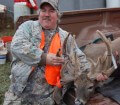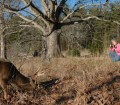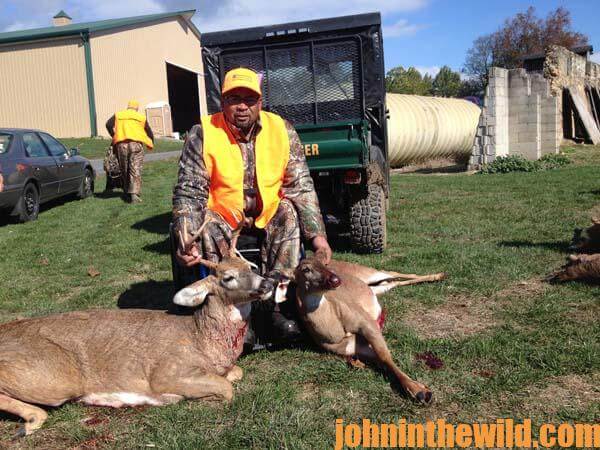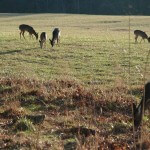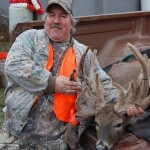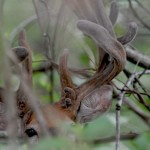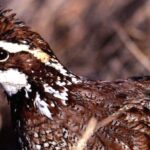John’s Note: Fifty-year-old Mark Clemens from Baltimore, Maryland, who’s been hunting deer for 38 years, is a nuisance deer hunter. He’s on the cutting edge of changes that are being made in deer hunting across the nation. If you live in a gated community or anywhere that you’re seeing deer around your house, you need to realize that right now there are as few deer on your property as there ever will be, unless some type of control measures are instituted to keep deer numbers in check. In a healthy deer population, does will produce from one to three fawns per year with two being the average. In communities that don’t allow for the hunting of these nuisance deer, you easily can see why deer herds in suburbia are drastically increasing. The same is true for rural farms and ranches, especially where agriculture is being produced. Deer love agriculture, especially soybeans, corn, watermelons and other crops. Clemens is one of the new breed of hunters who’s tasked with the responsibility of keeping deer herds at a manageable level. Clemens also enjoys taking wounded vets hunting and introducing youngsters to the sport.
My friends and I hunt nuisance deer for the Parks and Recreation Department in Howard County. Some parks only allow 12 hunters, because the parks are so small. Larger parks may have as many as 40 hunters who come to help remove the surplus deer from the parks. The number of hunters is also decided by how many hunters can be put on an area and hunt safely. Safety is the number one concern that all landowners have on these urban hunts. The first criterion for being selected to hunt these properties is that the hunter is known as a safe hunter and is willing to pass up shots at deer if there is a safety concern. Howard County posts a notice in the newspapers about the nuisance deer hunts that they plan to hold. Any hunter can apply to attend those hunts. These hunters are screened to make sure that they will be safe and ethical, if they’re selected to attend these hunts and are given all the instructions about how, when and where the hunts will be held..
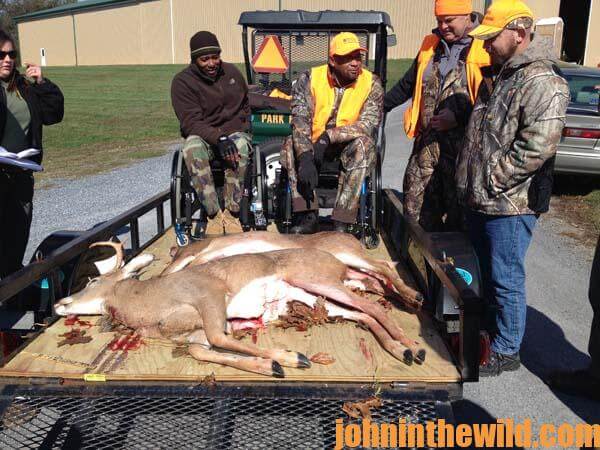 The first year we hunted Howard County parks, we were given a limit of 200 deer to be harvested in all the three parks open to hunting. Eight days of hunting were scheduled for the parks. The deer harvested from the parks didn’t count against the two buck, 10 doe deer tag that the hunters purchased. In an average year, I’ll take 15 to 30 deer from the community hunt like the one held at Accokeek, the Howard County park hunt and an 800 acre farm with a crop depredation permit. I also help with four Wounded Warrior hunts every year on a separate property that’s set aside strictly for the Wounded Warrior hunt. Friends and I usually take 8 to 12 Wounded Warriors on this hunt. On the first day of the first hunt, nine Wounded Warriors harvested 50 deer. One soldier, who never had taken a deer in his life, took nine deer on that day with two bucks. This hunt is a county-wide hunt. The deer taken on this hunt by the Wounded Warriors don’t count against their deer tags.
The first year we hunted Howard County parks, we were given a limit of 200 deer to be harvested in all the three parks open to hunting. Eight days of hunting were scheduled for the parks. The deer harvested from the parks didn’t count against the two buck, 10 doe deer tag that the hunters purchased. In an average year, I’ll take 15 to 30 deer from the community hunt like the one held at Accokeek, the Howard County park hunt and an 800 acre farm with a crop depredation permit. I also help with four Wounded Warrior hunts every year on a separate property that’s set aside strictly for the Wounded Warrior hunt. Friends and I usually take 8 to 12 Wounded Warriors on this hunt. On the first day of the first hunt, nine Wounded Warriors harvested 50 deer. One soldier, who never had taken a deer in his life, took nine deer on that day with two bucks. This hunt is a county-wide hunt. The deer taken on this hunt by the Wounded Warriors don’t count against their deer tags.
 Primarily, Howard County produces corn and soybeans, which are two of the deer’s favorite foods. That’s one reason deer numbers have to be reduced every year. If the whitetails go unchecked, they completely can destroy a farmer’s crops. Although we primarily try to harvest does, we are also allowed to take bucks. The nuisance hunters I hunt with have set a standard that we all try to follow when harvesting bucks. We usually only will take bucks with antlers wider than their ears. So, most of the bucks will be 8 points or better and score between 120 and 150 composite scores. Some hunts allow the hunters to take any deer they legally can harvest with their deer tags.
Primarily, Howard County produces corn and soybeans, which are two of the deer’s favorite foods. That’s one reason deer numbers have to be reduced every year. If the whitetails go unchecked, they completely can destroy a farmer’s crops. Although we primarily try to harvest does, we are also allowed to take bucks. The nuisance hunters I hunt with have set a standard that we all try to follow when harvesting bucks. We usually only will take bucks with antlers wider than their ears. So, most of the bucks will be 8 points or better and score between 120 and 150 composite scores. Some hunts allow the hunters to take any deer they legally can harvest with their deer tags.
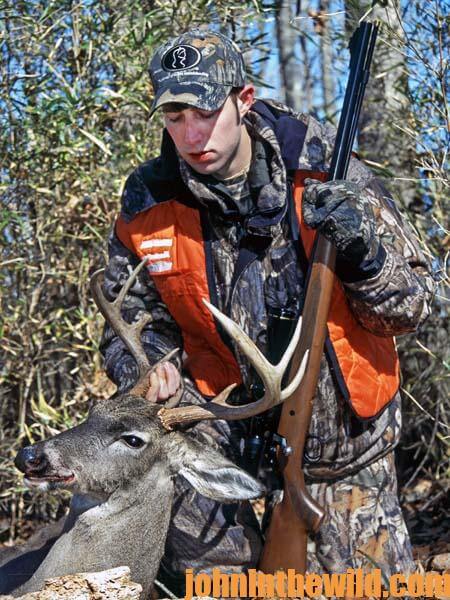 To get John E. Phillips’ Kindle eBooks and print books on hunting deer, “How to Hunt and Take Big Buck Deer on Small Properties,” (John’s latest book), “How to Hunt Deer Up Close: With Bows, Rifles, Muzzleloaders and Crossbows,” “PhD Whitetails: How to Hunt and Take the Smartest Deer on Any Property,” “How to Take Monster Bucks,” and “How to Hunt Deer Like a Pro,” or to prepare venison, “Deer & Fixings,” click here.
To get John E. Phillips’ Kindle eBooks and print books on hunting deer, “How to Hunt and Take Big Buck Deer on Small Properties,” (John’s latest book), “How to Hunt Deer Up Close: With Bows, Rifles, Muzzleloaders and Crossbows,” “PhD Whitetails: How to Hunt and Take the Smartest Deer on Any Property,” “How to Take Monster Bucks,” and “How to Hunt Deer Like a Pro,” or to prepare venison, “Deer & Fixings,” click here.

